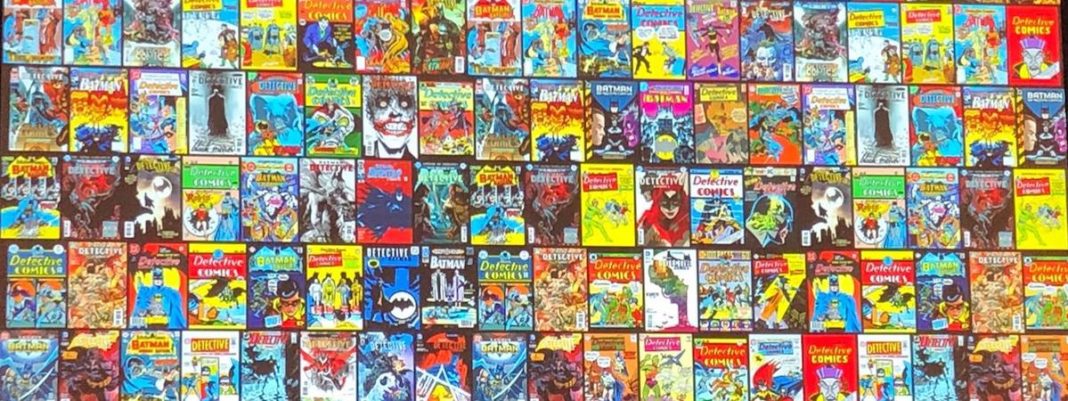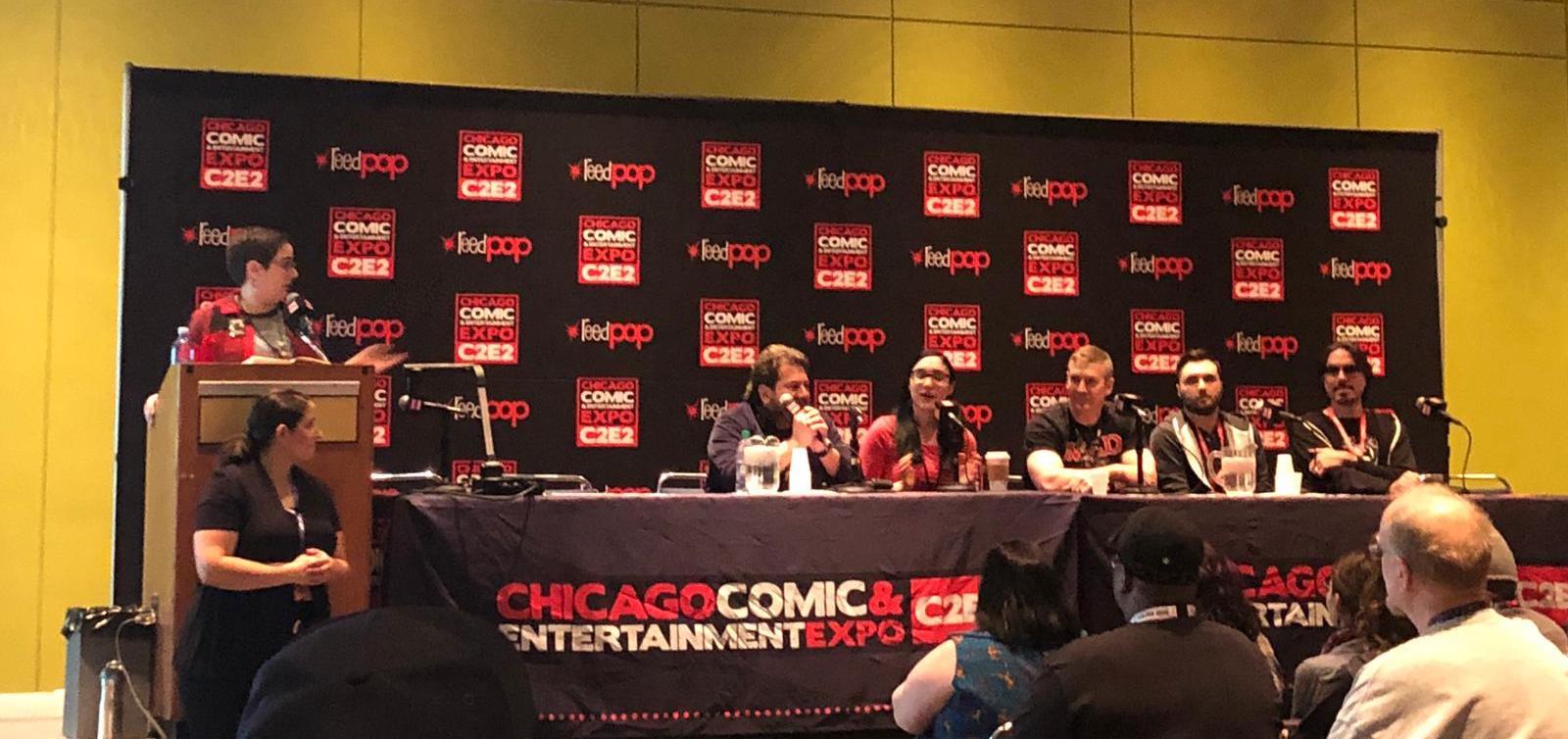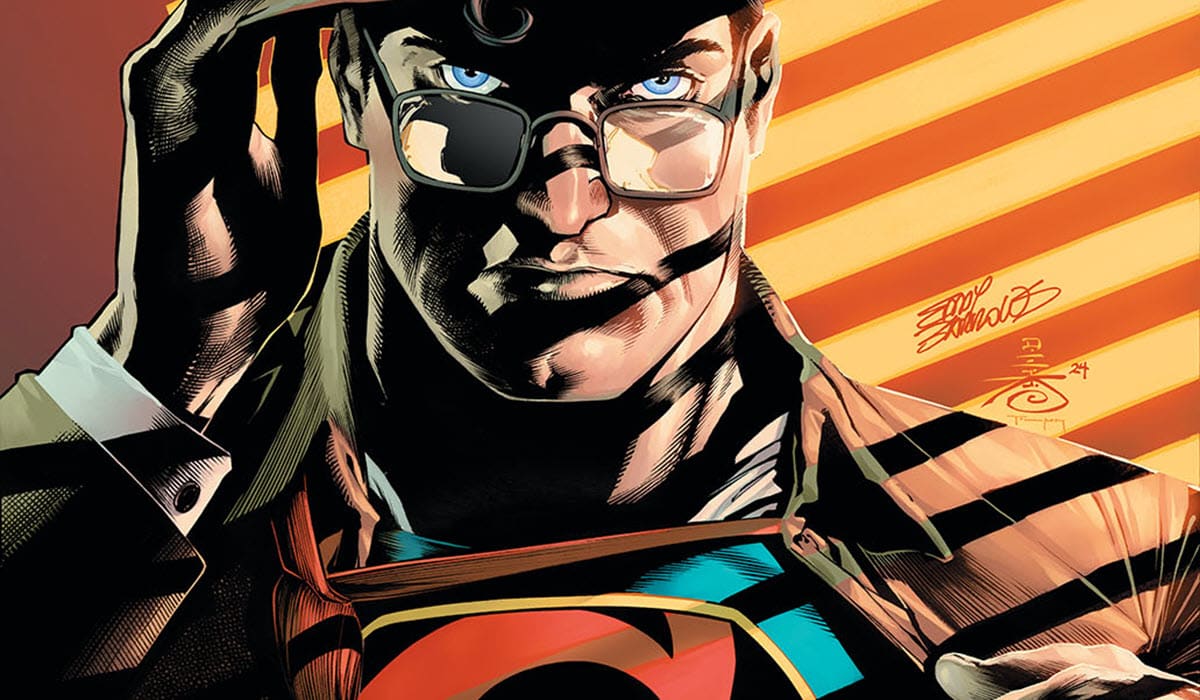2019 marks the 80th anniversary of one of the underdogs in comics, a character that has surprisingly endured throughout the years, despite every other DC character outselling him at a monumental rate. I joke, of course. There wasn’t as wide of a selection of Batman writers and artists at this year’s C2E2 in Chicago, as evident by the lack of actual, significant Batman creators.
Moderating the panel was Kaitlin Rosberg, who was joined by Peter J. Tomasi (Batman and Robin, Detective Comics), Jason Fabok (Detective Comics, Batman: Three Jokers), Marc Silvestri (Batman/Joker: Deadly Duo), Tom Richmond (Mad Magazine), and Chrissie Zullo (DC Collectibles and statues).
Rosberg discusses the origins of Batman, and whether or not his 1930s pulp origin has remained in his DNA, or if it’s more tertiary to other aspects of the character. Tomasi responds, claiming that every writer working on the character still retains the inherent pulp and noir, which is apparent in his detective skills. He goes on to say that it’s in Batman’s DNA and it’s there for any creator to tap into.
With a character that’s been around as long as Batman, something about him must endure with fans. Rosberg asks the panel about any era of the character that they find compelling. Silvestri answers first, with The Dark Knight Returns by Frank Miller. Miller distilled Batman to the very pathology that drives him, and establishes his motivations of vengeance and privilege in a way that no other writer before him has. This aspect, Silvestri argues, makes him the most unique out of any superhero character out there.
Zullo cites the ever-popular Batman: The Animated Series, and specifically praises the Bruce Timm designs as well as the look of the backgrounds of the show. As for the comics, she really connected to The Long Halloween by Jeph Loeb and Tim Sale.
Richmond was born in 1966, so he was constantly introduced to different eras of the character. He first met Batman in the Adam West television show, and was then blown away by the Denny O’Neil and Neal Adams stories in the comics.
Tomasi chimes in, adding that each decade had a significant creative team that reworked the character for some time to come. He cites such creators as Bob Haney, Jim Aparo, Neal Adams, Frank Miller, Scott Snyder, and Greg Capullo.
Rosberg points out that the term anti-hero is thrown around a lot these days, and asks if Batman falls under this category of characterization. Silvestri begins his answer by defining what he considers to be a hero, which is someone performing a selfless act. He doesn’t think Batman is entirely selfless since his mission is fueled by revenge. Tomasi disagrees, saying that Batman is a hero because he goes out every night while understanding the cost of being Batman, which he explored in his first arc of Detective Comics. Silvestri feels that Batman is a bit on the grayer side. He certainly has a personal mission but he does so thinking that Gotham is his city and its people are his to protect.
The conversation shifts as Rosberg ponders the role of Gotham itself in the popularity of Batman. Fabok describes it as the coolest setting since the city has had many different interpretations. It can range from super realistic, to goofy, to dark and stylized. Silvestri describes it as an essential character to the mythos, much like the Enterprise in Star Trek.
What about Batman’s side characters, asks Rosberg. Which ones do the panel connect to the most? Tomasi’s response should have been obvious given the sheer amount of time he’s spent with the character. He chooses Damian Wayne, the current Robin and Batman’s son. He was honoured to be given the reigns of the character following Grant Morrison’s departure.
Catwoman is Zullo’s choice. She’s Batman’s equal and her status as a good character or a bad one is always left up in the air, leading to an interesting dynamic between the two characters.
Richmond goes with an underutilized and key character to the Batman mythos, Ace the Bat Hound. Fabok’s answer is more layered. He likes to see Batman alone since that informs what he thinks of the character, but since working on Batman: Three Jokers, he’s fallen in love with Red Hood (Jason Todd, former Robin) and claims that Geoff Johns’ story for the book is the best Red Hood story over told. Tomasi adds that a dynamic for Batman makes things more interesting, although he also does like it when he’s left to himself.
Jokingly, Silvestri chooses Bat-Mite. He also prefers Batman to be alone, but likes Joker and Catwoman as foils for the character since they’re the only people he can’t control; he can’t tell them what to do. Rosberg jumps in, saying that the tone of the story is sometimes dictated by whether Batman is hanging out with Robin or not.
Moving on, Rosberg asks the panel what their favourite Batman stories are. Both Silvestri and Tomasi choose Year One. Tomasi explains that back when he was an editor at DC he would call up David Mazzucchelli at Christmas time every year to ask if he wanted to do a Batman story. He would always turn Tomasi down. Zullo once again praises the collaborative efforts of Jeph Loeb and Tim Sale, which Fabok also echoes. He also love Hush and says that that was the book that made him want to be a comic book artist. His favourite comic art of all time is always fluctuating, but it’s currently Brian Bolland’s work on The Killing Joke with Alan Moore. Richmond once again sticks with O’Neil/Adams’ work on Ra’s al Ghul.
Rosberg opens the floor to some questions. A fan asks Fabok about the progress of Batman: Three Jokers. Fabok and Johns intend to release the series as three 50-page issues on a monthly schedule, which means they need to get all the issues finished before soliciting them. He thinks it’ll be out this year.
Another fan asks about Batman’s trunks, or underwear as he puts it, and whether or not the panel were fans of them being brought back. Tomasi draws a big laugh by saying, “Too many man hours were spent talking about underwear.” Fabok says he doesn’t really like them, especially after having drawn a lot of Batman without the trunks on. In fact, he’s removed them for Three Jokers. Silvestri ends it with a joke, claiming that his Batman doesn’t wear underwear on the outside nor the inside.
And that was the panel! It was a funny and breezy affair and Rosberg generated interesting discussions about Batman’s legacy with some outside-the-box perspectives from Zullo and Richmond.









Thanks for the awesome write up! (Just FYI it’s Caitlin rather than Kaitlin, but I appreciate that there’s a million ways to spell it.) Hope you had an awesome C2E2!
Comments are closed.